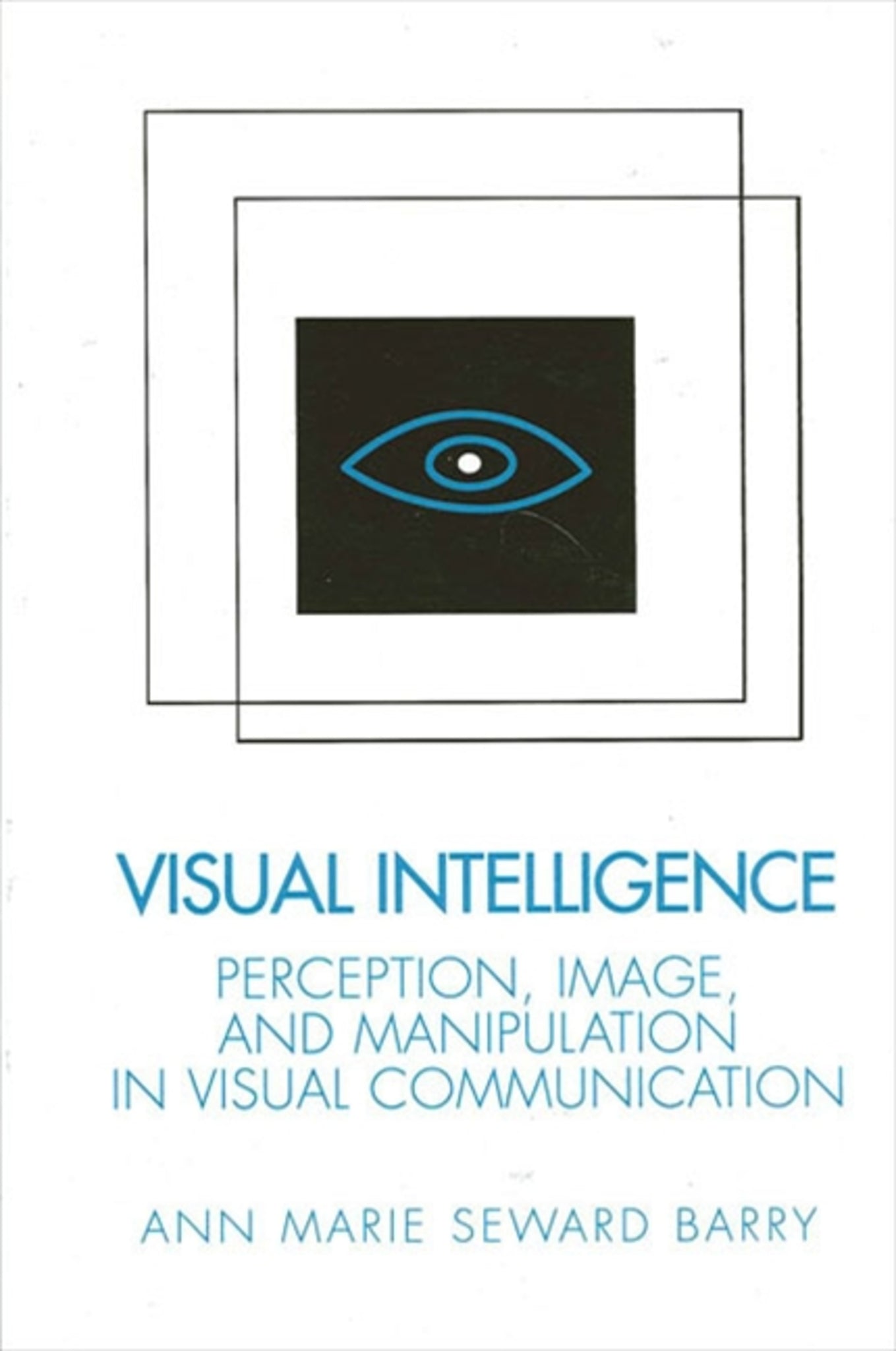We're sorry. An error has occurred
Please cancel or retry.
Visual Intelligence

Some error occured while loading the Quick View. Please close the Quick View and try reloading the page.
Couldn't load pickup availability
- Format:
-
30 June 1997

Cuts across perceptual psychology, art, television, film, literature, advertising, and political communication to give the reader critical insight into the holistic logic and emotional power of the images that dominate our lives.
Today, our environment is dominated by the visual. This book explores "visual intelligence" as a basic and indispensable tool of cultural survival. The author offers a practical manual on a non-superficial level for those who seriously want to know how images are processed, how they function in relation to our innermost beings, and how they form the psychological fabric of our political, social, and economic environment. Barry defines how we derive meaning from images and examines perceptual process, how it has evolved, and the role it plays in our thinking. She critically examines the concept of rationality and explores how visual logic works to create meaning. The book goes behind the obvious and beyond the superficial as it critically examines the visual power and logic of images, cutting across a variety of areas: perceptual psychology, art, television, film, literature, advertising, and politics.
The second section of Visual Intelligence examines the role which various media play in creating the images which impact our lives: how visual images create a language with profound psychological meaning, and how print, television, and film media manipulate images to create desired emotional effects. Close-ups explore visual subtleties in such areas as digital manipulation, camera attitudes, and contextual framing, as well as the social consequences of "image" as an abstract concept expressed in concrete visual terms. Part III looks critically at the most controversial areas of image persuasiveness today-advertising, politics, and entertainment.


"We have always been interested in 'what images mean,' but in the current era of expanding visual technologies, the question is critical. Visual intelligence is recognized as an aspect of intelligence that is crucial to understanding our world. The role of visual intelligence must be considered in the educational process. The increasing role of visual images in our society necessitates increasing skills in the reading and understanding of those images. This book hits on a central quandary of contemporary society, the power of visual media and the use and control of that power." — Mary Stieglitz, Boise State University
List of Figures
Acknowledgments
Introduction
I. Perceiving Images
1. Perception and Visual "Common Sense"
Evolution, Emotion, and Subliminal Perception Fallacies of Rationality Perceptual Illusion Remnants of Former Perceptual "Truths" Neurology of Perception Holistic versus Analytical Perceptual Views Gestalt Roots From Phi to AM Event Perception, Media, and Logic Perceptual Principles and Artistic Manipulation Multisensory Surrounds and Virtual Reality Brain Wiring Conclusion
2. The Nature and Power of Images
Defining the Image Primal Invariance: Cave Art to Comics Image Affordance Inner Necessity Mental Imagery Metaphors of Mind Eiconics Conclusion
II. Mediated Images
3.The Language of Images
Language Comics and Hieroglyphics Proxemics Deep Structure Semiotics Literary Imagery: Breaking through Words Color Light, Grain, Angle and Size Conclusion
Close Up: Manipulating Public Images in the Age of Digitalization: J.F.K. Marries Marilyn; O.J. Metamorphoses from Black to White
4.Video's Moving Images
Video Experience and the Nature of the Image Low and High Definition The O.J. Phenomenon Sensation, Information, and Dreams Manipulating TV Images
Close Up: Manipulating Public Image through Television Image: "Teddy"
5.Film Logic and Rhetoric
Perception and the Development of Montage Film Origins Editing and Perceptual Process Kuleshov Workshop Pudovkin: Linkage Montage Eisenstein: Dialectical Montage From Long Take to CG Sound and Mental Imagery Hollywood Style and Linear Narrative Color Comes to Black and White 2-D to 3-D SFX The Third Phase Conclusion
Close Up: Tailhook "Top Guns": Living Up to the Image
III. Controversial Images
6. Advertising Images: Seduction, Shock, and the Unwary
Ads as Gestalts Tension and Closure The Big Idea Embeds and Subliminal Advertising Advertising and Color The Sex-Sell: Women's Bodies and Normative Images The Sex-Sell: Men and Their Machines Joe Camel and the Marlboro Man: Images That Kill Conclusion
7. Political Images: Public Relations, Advertising, and Propaganda
Hill and Knowlton's PR War Effort Political Advertising and Public Image Images of Hitler Image and Group Psychology Conclusion
8. Media Images and Violence
Physical Causes of Violence Desensitivity Attitudinal Studies and Image: Mean World Consequences How Violent Is TV? Imitative Violence Long Term Studies The New Violence The Public Trust Video Games Conclusion
Conclusion
Notes
Bibliography
Index



